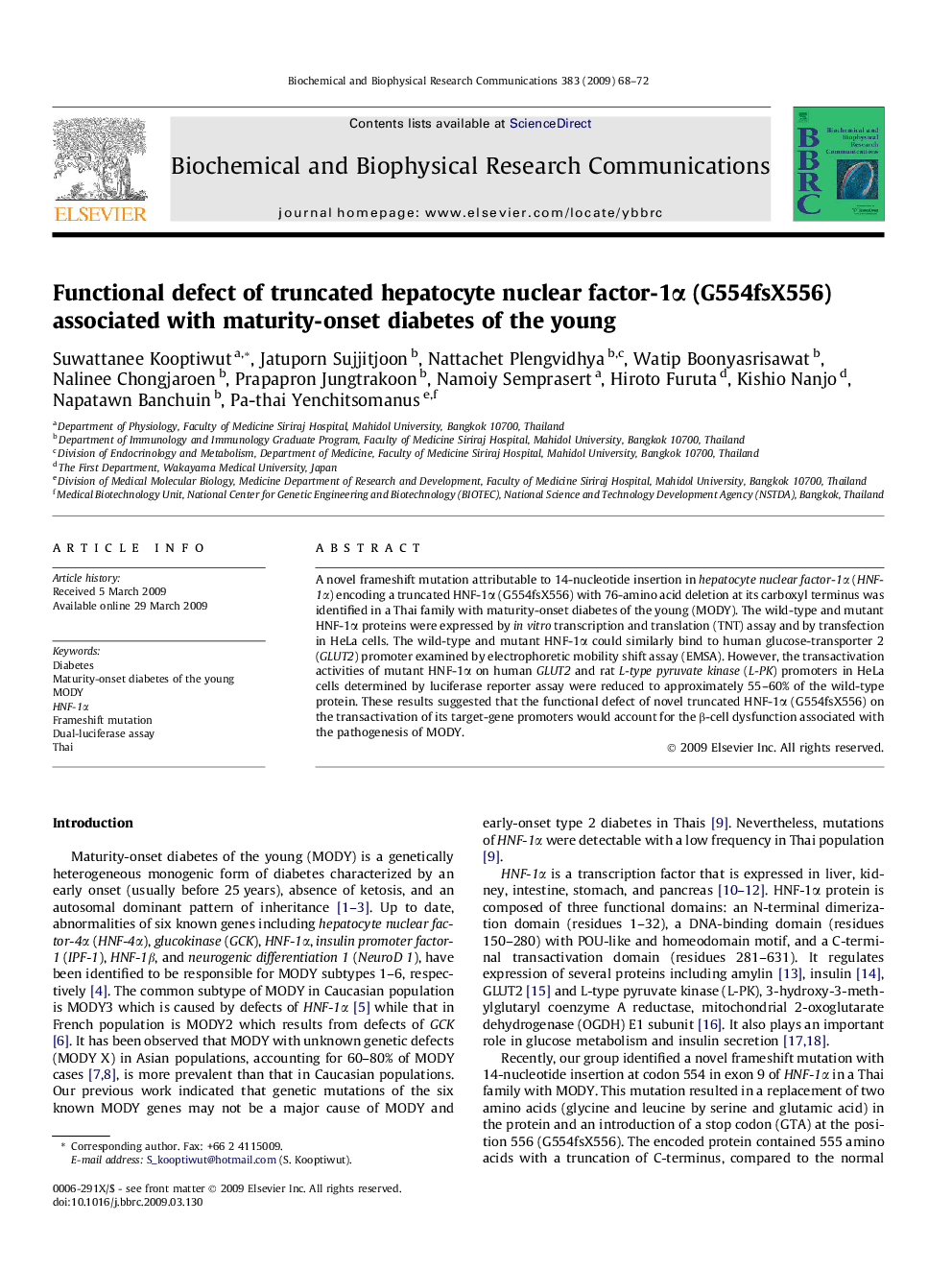| Article ID | Journal | Published Year | Pages | File Type |
|---|---|---|---|---|
| 10765957 | Biochemical and Biophysical Research Communications | 2009 | 5 Pages |
Abstract
A novel frameshift mutation attributable to 14-nucleotide insertion in hepatocyte nuclear factor-1α (HNF-1α) encoding a truncated HNF-1α (G554fsX556) with 76-amino acid deletion at its carboxyl terminus was identified in a Thai family with maturity-onset diabetes of the young (MODY). The wild-type and mutant HNF-1α proteins were expressed by in vitro transcription and translation (TNT) assay and by transfection in HeLa cells. The wild-type and mutant HNF-1α could similarly bind to human glucose-transporter 2 (GLUT2) promoter examined by electrophoretic mobility shift assay (EMSA). However, the transactivation activities of mutant HNF-1α on human GLUT2 and rat L-type pyruvate kinase (L-PK) promoters in HeLa cells determined by luciferase reporter assay were reduced to approximately 55-60% of the wild-type protein. These results suggested that the functional defect of novel truncated HNF-1α (G554fsX556) on the transactivation of its target-gene promoters would account for the β-cell dysfunction associated with the pathogenesis of MODY.
Related Topics
Life Sciences
Biochemistry, Genetics and Molecular Biology
Biochemistry
Authors
Suwattanee Kooptiwut, Jatuporn Sujjitjoon, Nattachet Plengvidhya, Watip Boonyasrisawat, Nalinee Chongjaroen, Prapapron Jungtrakoon, Namoiy Semprasert, Hiroto Furuta, Kishio Nanjo, Napatawn Banchuin, Pa-thai Yenchitsomanus,
